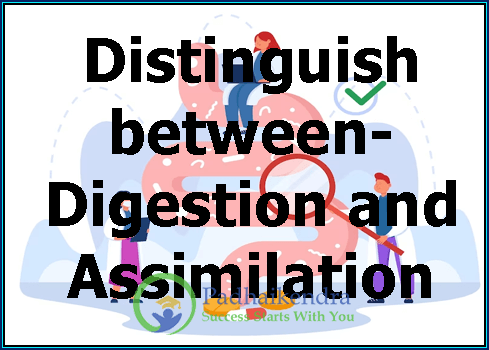Digestion and assimilation are two different processes involved in the digestion and utilization of food in the body.
- Digestion: This is the process by which food is broken down into smaller molecules that can be absorbed and utilized by the body. Digestion occurs in the mouth, stomach, and small intestine, where enzymes and other digestive juices break down complex carbohydrates, proteins, and fats into simpler molecules such as glucose, amino acids, and fatty acids.
- Assimilation: This is the process by which the simpler molecules produced during digestion are absorbed into the bloodstream and transported to the cells of the body, where they are used for energy, growth, and repair. Assimilation occurs primarily in the small intestine, where the walls of the intestine absorb the simple molecules produced during digestion and transport them to the bloodstream for distribution throughout the body.
In summary, digestion is the process of breaking down complex food molecules into simpler molecules that can be absorbed by the body, while assimilation is the process of absorbing and utilizing these simpler molecules for energy, growth, and repair. Digestion occurs primarily in the mouth, stomach, and small intestine, while assimilation occurs primarily in the small intestine and throughout the body’s cells.





